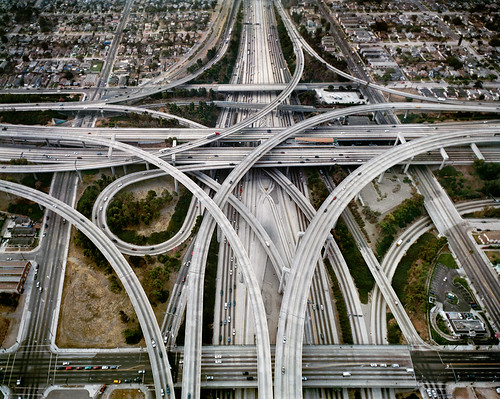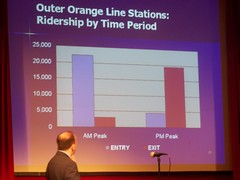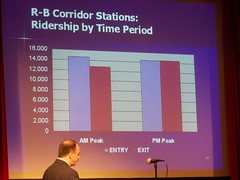Dangerous minds...
It's not original thinking to put rail transit on freeways. Even if the New York Times thinks it is and deemed it necessary to run this not very interesting op-ed, "Revolutionary Road." But it's dangerous thinking. Freeways allow people to get to and from places, but generally they don't connect activity centers and neighborhoods very directly.
From the article:
WITH the unemployment rate at 10.2 percent and job creation creeping along despite increased spending on infrastructure, we should look with new eyes at a resource we’ve failed to take full advantage of: the Interstate highway system.
Much of President Obama’s stimulus package has gone to maintaining our roads, and rightly so. But as we invest in the highways that accelerated suburban sprawl and deepened our addiction to oil, we should use the opportunity to invent new uses for the almost 47,000-mile long Interstate system.
Consider it a kind of adaptive reuse: the old foundry reborn as a luxury loft building, the abandoned industrial bakery transformed into a chic urban mall. It’s been a long time since we’ve been able to see beyond the traffic and the exhaust fumes. But if we expand the highway system’s uses in anticipation of a time when we are no longer dependent on the internal combustion engine, we may also appreciate the beauty in its graceful overpasses, lofty bridges and complex cloverleaf interchanges.
The real lesson is that deconcentrating land use is expensive. It doesn't make sense to concentrate around deconcentrated highway ribbons. It makes sense to recentralize around center cities and secondary cities within metropolitan regions. While he focuses on center cities primarily, that is the point of the argument in Cities in Full by Belmont--to recentralize housing, commerce, and transportation.
Leave the freeways be and focus on the cities.

Highway #1 Los Angeles, California, USA, 2003, Edward Burtynsky. From the exhibit Burtynsky: Oil at the Corcoran Gallery of Art--ending December 13th.
In the Washington region, the Vienna Metro is a good example of a subway station on a freeway that is disconnected somewhat from the area around it.

Vienna Metro station in the median of I-66 in Fairfax County, VA. Two pedestrian bridges conenct the station with parking lots. Vienna is the Virginia terminus of the Orange Line. Flickr photo by Andy961
And the difference in the impact of transit in Arlington, which didn't run the subway along I-66 but diverted it to the county, under Wilson Blvd., versus Fairfax County, which has freeway oriented stations, ought to make very clear that freeway-based transit generally isn't a good idea.


Images from a presentation by Chris Zimmerman of Arlington County. The subway stations in Arlington County have a more balanced usage throughout the day.
Transport Politic wrote about this recently in "Portland’s New Light Rail Line is Welcome News, But It’s Not Routed as It Should Be," and "Alternative Alignments for Corridor Cities Transitway Illustrate Importance of Reaching Town Centers " and I mention it all the time.
Let this kind of idea die.
Labels: sustainable land use and resource planning, transportation planning, urban design/placemaking



0 Comments:
Post a Comment
<< Home